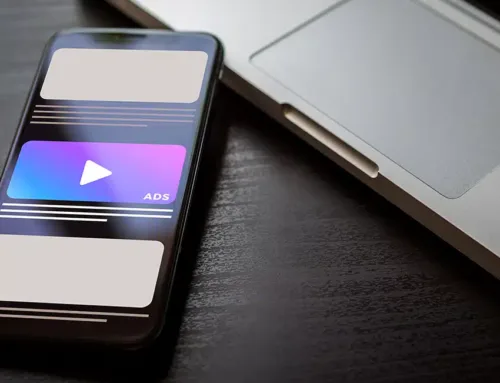What is Programmatic Direct?
In this article, we will delve into Programmatic Direct, a technique by which advertisers utilize automated technology to buy digital advertising space directly from publishers. By doing so, the middlemen are eliminated, resulting in more focused and effective ad placements. Programmatic Direct simplifies sales processes, making it easier for advertisers to secure ad space. We’ll examine the workings of Programmatic Direct and discuss its advantages for both advertisers and publishers.
Key Takeaways
- Programmatic Direct allows advertisers to buy digital ad space directly from publishers using automated technology, increasing efficiency and reducing the need for third-party intermediaries.
- Programmatic Direct deals can be classified into Programmatic Guaranteed and Preferred Deals, each offering various levels of predictability and flexibility for ad placements and pricing.
- Programmatic Direct presents significant benefits such as revenue maximization and enhanced control over ad placements.
Understanding Programmatic Direct
Programmatic Direct is a sophisticated form of ad buying that automates the process, enabling advertisers to secure digital advertising space directly from publishers. This method optimizes the transaction and placement of targeted ads with numerous advantages:
- It eliminates middlemen, enhancing efficiency and transparency in digital advertising transactions.
- Automation in sales processes minimizes human error risks.
- Guarantees effective use of premium inventory.
- Saves time compared to traditional direct deals, which often involve complex negotiations and intermediaries.
Due to its operational efficiencies, Programmatic Direct has become a highly regarded mechanism within digital advertising. At its essence, Programmatic Direct aims to:
- Provide publishers with control over ad serving through direct agreements.
- Harness advanced targeting techniques.
- Assure occupancy of premium ad spaces by pertinent advertisements.
- Increase revenue opportunities for content providers.
- Improve advertisement quality experienced by end-users.
In subsequent sections, we will explore what defines Programmatics Direct and how this cutting-edge practice is revolutionizing the industry dynamics of digital marketing.
Definition of Programmatic Direct
Programmatic Direct is a subset of programmatic advertising that allows advertisers to directly purchase ad space from publishers using automated technology and sophisticated algorithms. This approach forgoes middlemen, optimizing the process and increasing efficiency. Unlike traditional direct deals that rely heavily on human negotiations, Programmatic Direct uses data analytics to refine ad placement strategies.
Distinguishing itself from other forms of programmatic purchasing, Programmatic Direct focuses on fixed terms and guaranteed inventory between buyers and sellers. Parties agree on conditions including impression volumes and set pricing rates, leading to a stable operation for distributing ads. With automation at its core, Programmatic Direct simplifies transactions and minimizes errors associated with manual processes, establishing itself as an effective means for trading digital ad spaces.
How Programmatic Direct Works
Programmatic Direct employs advanced technological platforms to streamline transactions between advertisers and publishers. Advertisers use a Demand Side Platform (DSP) to automate the placement of their ads and manage their campaigns, ensuring they reach their intended audience effectively. Conversely, publishers use a Supply Side Platform (SSP) to efficiently sell available ad space on their sites. The integration of these platforms ensures optimal utilization of advertisement spaces.
An ad exchange acts as the intermediary connecting DSPs with SSPs, facilitating instantaneous auctions for advertising transactions. Unlike real-time bidding processes, where advertisers bid for ad spaces in an auction model, Programmatic Direct relies on established direct deals with predefined terms agreed upon by both parties. This method simplifies sales, enhances predictability, and increases control over ad placements, making it particularly desirable for premium inventory.
Programmatic Direct automates negotiation and sale procedures, significantly reducing the time needed to confirm ad placements. This leads to greater operational efficiency and ensures that ad spots feature high-quality content. As a result, it increases revenue potential for publishers while enhancing the end-user experience through better-quality advertisements.
Types of Programmatic Direct Deals
Different types of Programmatic Direct advertising deals are crafted to suit a variety of advertising requirements and preferences. Key varieties include Programmatic Guaranteed and Preferred Deals, each providing unique benefits tailored to particular situations. Grasping the nuances between these deal types is vital for both advertisers and publishers looking to enhance their approach to ad placements.
Programmatic Guaranteed
Programmatic Guaranteed arrangements are aimed at delivering a certain level of certainty and assurance for publishers as well as advertisers. Features of these agreements include:
- Pre-agreed conditions, including a specific allotment of impressions or allocated budget.
- Reserved inventory exclusively available to the advertiser at an established fixed price.
- The exclusion of volatility inherent in auction-based buying models.
- Secured income flow for publishers from guaranteed ad placements.
Such deals appeal to big-scale publishers and advertisers seeking a consistent and reliable advertising execution framework. Advertisers gain the ability to strategically plan out their campaigns with confidence by locking in ad space beforehand, while publishers can make sure that they capitalize on their most valuable inventory effectively. Advantages offered by Programmatic Guaranteed include:
- Reliable delivery process for advertisements.
- Enables advertisers to plan campaigns with certainty and precision.
- Ensures prime ad slots are fully utilized by publishers.
- Lowers costs by minimizing the need for intermediaries.
By implementing Programmatic Guaranteed, both parties benefit financially.
Preferred Deals
Programmatic advertising through Preferred Deals offers advertisers the ability to negotiate and secure specific ad inventory on a ‘first look’ basis, providing exclusivity before the availability of such inventory across private or open ad exchanges. Advertisers leveraging multiple ad exchange accounts benefit from this model as it allows them to acquire prime advertising spots ahead of auction competition.
Benefits of Programmatic Direct for Publishers
Managing and monetizing ads through a Programmatic Direct deal presents publishers with several advantages, making it a sought-after method. These benefits include:
- An increased capacity for maximizing revenue.
- Enhanced control over where ads appear.
- The ability to harness direct deals alongside sophisticated targeting methods.
These attributes hold particular weight when dealing with premium ad inventory, where the relevance of content and pricing structures play pivotal roles. Crucially, Programmatic Direct offers distinct advantages by:
- Assuring that slots reserved for premier advertisements are occupied by high-quality promotions that can command higher rates than those typically seen on open exchanges.
- Fostering more intimate connections between publishers and advertisers, leading to greater insight into consumer audiences.
- Providing improved accuracy in both audience targeting and the negotiation process regarding prices.
Revenue Maximization
For publishers focused on revenue maximization, the significance of Programmatic Direct cannot be understated. This method streamlines the sales process by automating it and eliminating any middlemen, ensuring that premium ad inventory commands superior prices. The result is an increase in total ad revenue, benefiting publishers who depend on high-impact ads to amplify their CPMs.
Programmatic Direct isn’t just about fetching higher rates. Its advantages extend further:
- It boosts the effectiveness of selling ads by cutting down on negotiation time and simplifying deal finalization.
- Publishers gain more bandwidth to refine their ad inventory management and curate ads that resonate with audiences.
In essence, this translates into enhanced financial gains for publishers.
Enhanced Control
Programmatic Direct affords publishers a heightened degree of control over their ad inventory and the management of their websites. Publishers maintain complete control over both the landing page and homepage, enabling them to better orchestrate where ads are placed within the context of their site. This ensures seamless integration and contributes to an engaging experience for users.
The advantages provided by Programmatic Direct include:
- Immediate clarity regarding impressions delivered, which supports workflow refinement and allows publishers to more intelligently shape their advertisement strategies.
- Deep insights into audiences drawn from direct interactions with advertisers, thus improving targeting accuracy and facilitating stronger negotiations on pricing.
- A boost in overall efficiency and effectiveness within the advertising sales operation.
Challenges of Programmatic Direct for Publishers
While a Programmatic Direct deal offers many advantages, it also presents several challenges that can impact the efficiency and efficacy of ad sales operations. Key challenges include:
Complex Contracts
Negotiating a Programmatic Direct deal often requires detailed discussions about cost, ad space volume, and targeting parameters. These complex contracts can be an obstacle due to the need for precise stipulations and multiple rounds of negotiation. However, once forged, they provide a consistent income source.
Unfilled Inventory
Unfilled inventory poses a significant risk, particularly in Preferred Deals where advertisers might decline impressions, leaving ad slots unsold. This can lead to lost revenue and reduced fill rates. Effective management and contingency planning are crucial to mitigate these risks and maintain a steady revenue stream.
By understanding and addressing these challenges, publishers can better leverage a Programmatic Direct deal to maximize their ad revenue potential.
Comparing Programmatic Direct with Other Programmatic Models
Understanding the advantages and limitations of Programmatic Direct necessitates an analysis alongside other programmatic models like Real-Time Bidding (RTB) and Private Marketplace (PMP). These distinct strategies each come with their set of benefits and shortcomings, which in turn affect how publishers and advertisers formulate their advertising tactics.
Programmatic Direct vs. Real-Time Bidding (RTB)
Programmatic Direct and Real-Time Bidding (RTB) are distinct methods within programmatic advertising:
- RTB: In RTB, advertisers participate in real-time auctions for ad space, creating a dynamic market where the cost per impression varies based on competition.
- Programmatic Direct: This model eliminates competitive auctions, establishing fixed deals directly between advertisers and publishers. It guarantees an agreed-upon number of impressions at a set price, providing more predictability and financial stability.
Programmatic Direct vs. Private Marketplace (PMP)
A Private Marketplace (PMP) is an invitation-only auction environment where selected advertisers bid for premium ad inventory. Here’s how it differs from Programmatic Direct:
- PMP: Offers a competitive auction for exclusive inventory, with publishers setting minimum CPMs and maintaining control over pricing.
- Programmatic Direct: Eliminates the need for auctions and intermediaries by providing direct access to ad slots based on pre-agreed terms. It offers greater transparency and predictability compared to Private Marketplaces (PMP).
Future Trends in Programmatic Direct
The future of Programmatic Direct is likely to be shaped by increased automation and integration with advanced technologies, setting the stage for a more efficient and effective advertising landscape.
Increased Automation
Automation is playing a pivotal role in transforming the programmatic advertising space. By minimizing human error and streamlining ad-buying processes, automation ensures that transactions are executed more swiftly and accurately. AI algorithms are at the forefront of this transformation, enhancing the efficiency of targeting and ad placement. These sophisticated algorithms can analyze vast amounts of data in real time, enabling advertisers to make informed decisions quickly. As a result, campaigns can be more precisely tailored to target audiences, leading to improved effectiveness and higher return on investment (ROI).
Integration with New Technologies
The integration of advanced technologies, particularly artificial intelligence (AI) and machine learning, is revolutionizing Programmatic Direct. These technologies are driving significant advancements in targeting accuracy, ad personalization, and predictive capabilities. AI-powered algorithms can automatically create highly personalized ads, adjusting images and messages in real-time to better resonate with specific audience segments. This level of personalization not only increases the relevance of ads but also enhances their overall impact, leading to higher engagement rates.
By leveraging real-time data, advertisers can adapt their strategies dynamically, improving engagement and campaign outcomes. Predictive technologies help identify emerging trends, allowing publishers to refine their ad sales strategies. As these innovations advance, they promise further improvements in efficiency and effectiveness.
Summary
To summarize, the advent of Programmatic Direct marks a transformative step in the realm of digital advertising by simplifying and expediting the procurement and vending processes for top-tier ad space. This automation facilitates smoother transactions, and maximizes usage of premium inventory to the mutual advantage of advertisers and publishers alike while providing more predictable outcomes with confirmed ads at set prices, which contrasts with less stable auction-based mechanisms.
Despite its advantages, such as increased revenue potential and better management, Programmatic Direct involves challenges like complex agreements and the risk of unsold inventory. Effective management of these challenges, combined with leveraging the benefits, can lead to improved advertising results.
Looking ahead, Programmatic Direct is set to evolve with greater automation and AI integration, ensuring its continued relevance and effectiveness in the evolving digital landscape.











